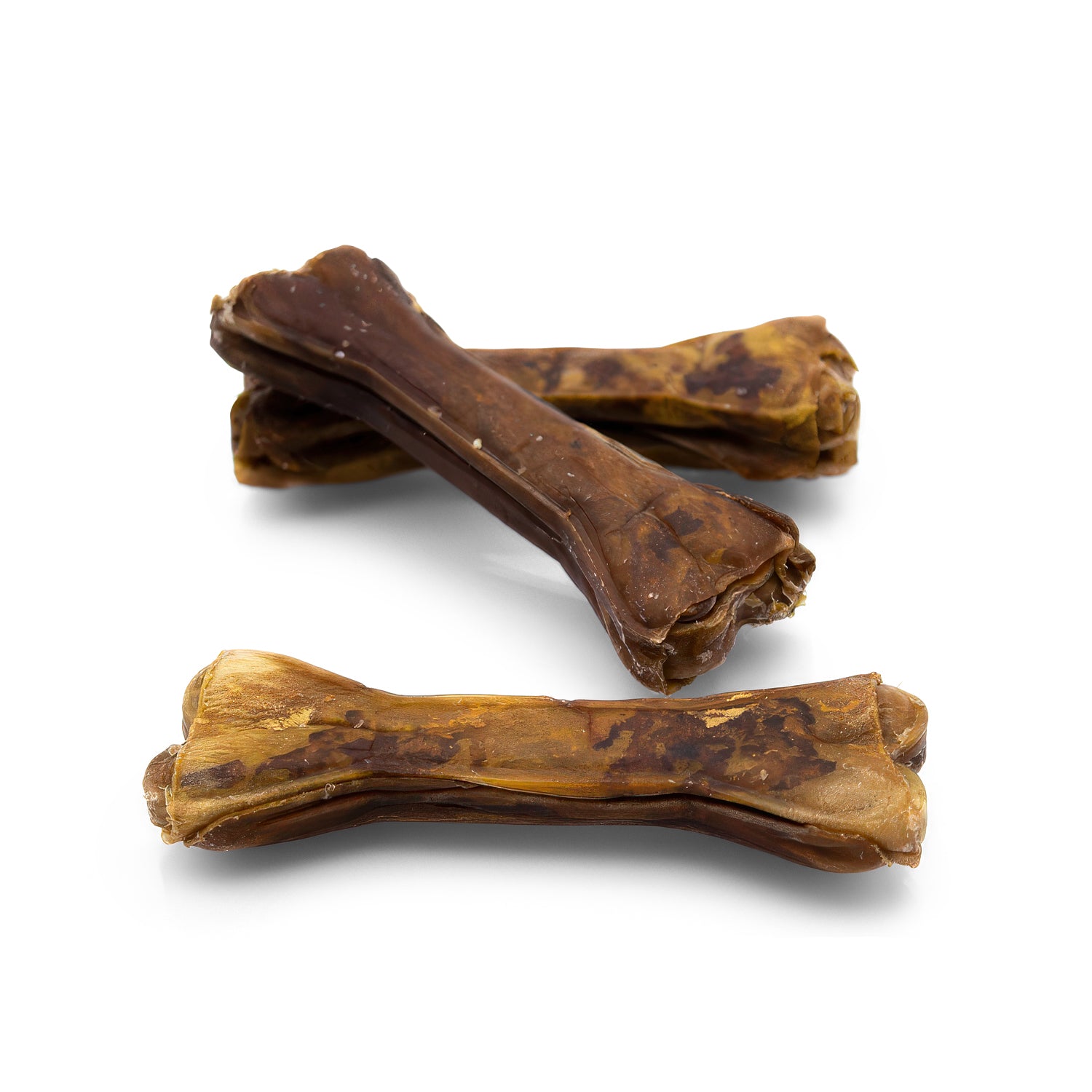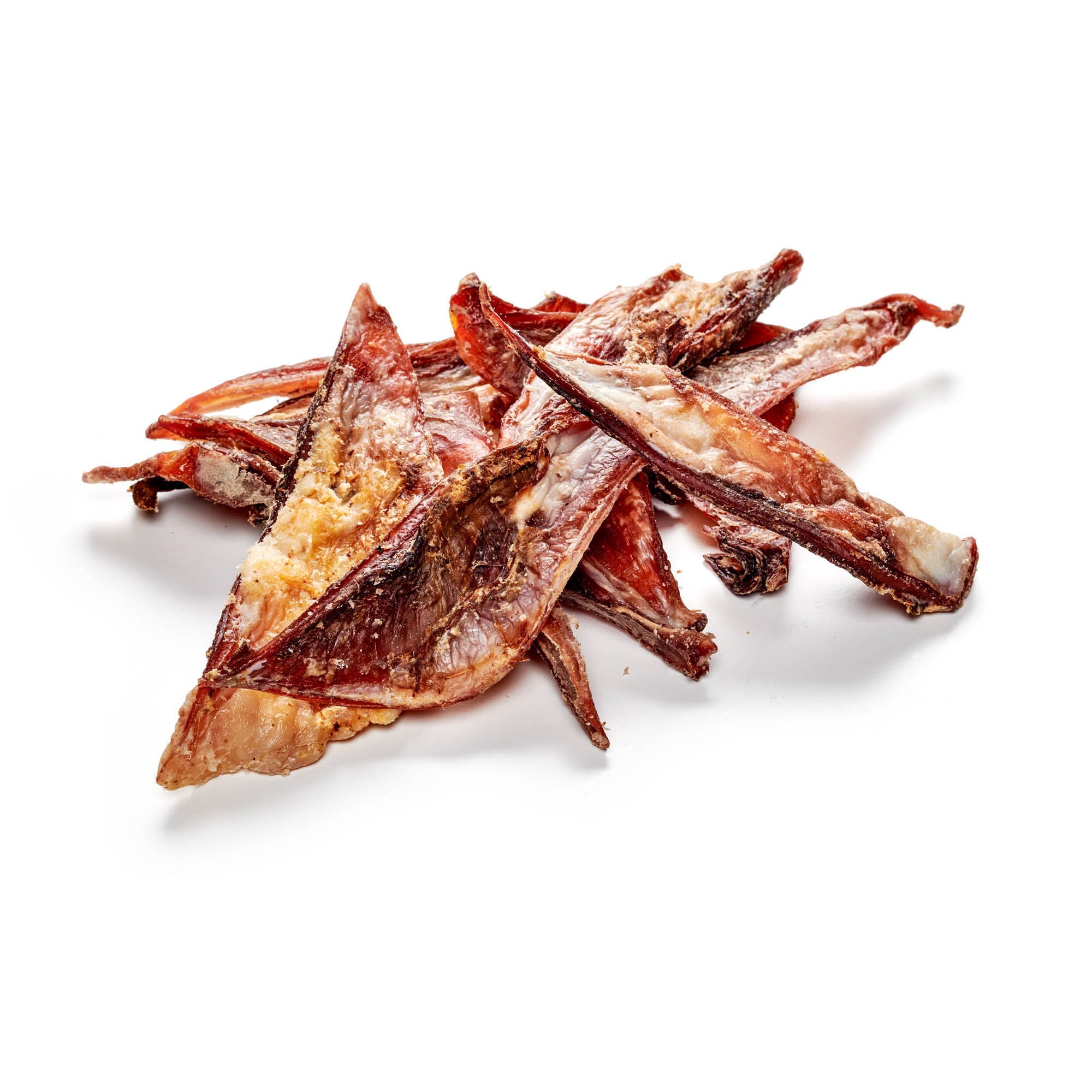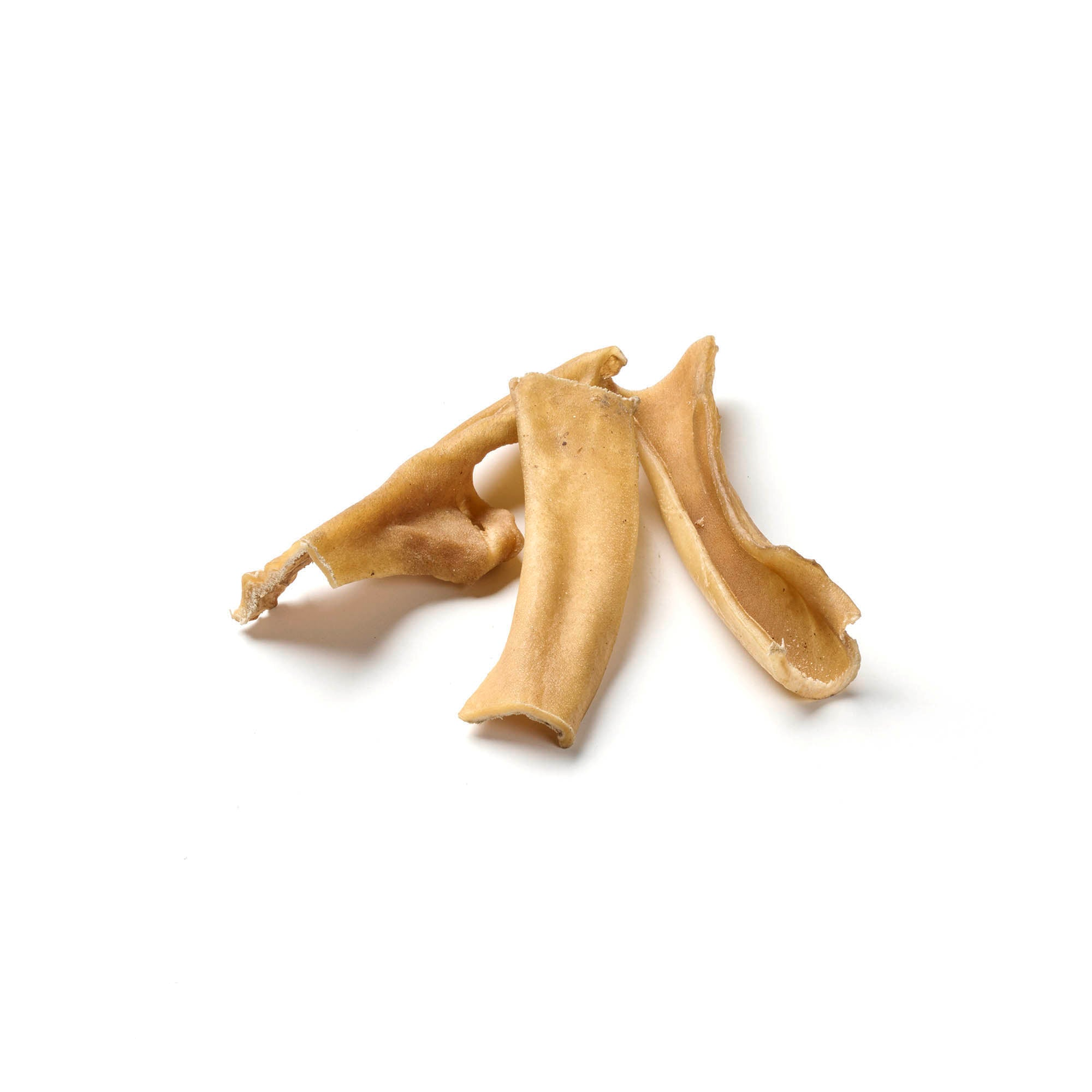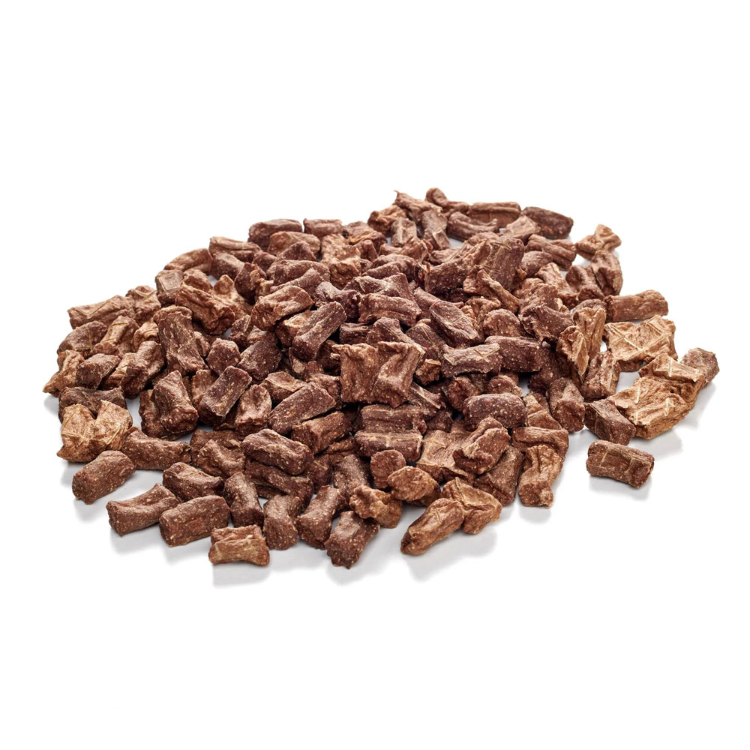
Clicker training for dogs
Share
It's almost like magic: one click and the dog shows the desired behavior. Clicker training has established itself as a popular method that is based on positive reinforcement and turns the four-legged friend into an obedient companion in a playful way. This training method is based on the principle of immediately rewarding desired behavior, which makes learning particularly efficient and pleasant for the dog.
Content: Clicker training for dogs
- What is clicker training?
- The advantages of clicker training
- Start with clicker training
- Basics of clicker training
- Advanced techniques
- Tips and mistakes you can avoid
- Clicker training and behavioral problems
- Conclusion
The use of the clicker, a small device that produces a precise sound, creates a clear level of communication between human and dog. Each click marks the exact moment when the dog has done something right, followed by a reward that increases his motivation. This method not only enables precise teaching of behaviors, but also strengthens the bond between human and animal.
Delicious chews for your faithful companion now available!
What is clicker training?
Clicker training is an innovative and effective method that is gaining popularity around the world. At its core, it is based on positive reinforcement and uses a simple but effective tool - the clicker - to enable clear communication between humans and dogs.
Definition and principles of clicker training
Clicker training is a form of dog training based on the principle of positive reinforcement. A small clicker - a handy device that makes a crisp sound - signals to the dog that he has done something right and will receive a reward. This method is particularly effective because it allows for precise timing and establishes clear communication between human and dog. The clicker serves as a marker that marks the exact desired behavior at the moment it is performed, which helps the dog to understand more quickly which behavior is correct.
The advantages of clicker training
Clicker training offers numerous benefits that make it a preferred method for many dog owners and trainers. This method not only allows for more precise communication, but also creates a positive and trusting learning environment.
Precise communication
The clicker allows you to precisely mark the desired behavior at the exact moment it occurs. This helps the dog to understand more quickly which behavior is being rewarded. Precise timing is crucial to avoid misunderstandings and optimize learning behavior. It creates a clear and immediate connection between behavior and reward. Unlike treats, which are often given with a time delay and are therefore less precise, the clicker offers immediate and consistent feedback.
Positive reinforcement
By using only positive reinforcement, a pleasant training atmosphere is created. The dog learns with joy and motivation, which significantly increases the success of the training. Instead of using punishment or negative consequences, clicker training rewards desired behavior, which increases the dog's willingness to learn and show new behaviors. This method stands out from traditional training methods, which are often based on corrections and coercion, and instead promotes an environment in which the dog cooperates happily and voluntarily.
Strengthening the human-dog bond
Clicker training promotes cooperation and trust between humans and dogs. Working on tasks and tricks together strengthens the bond in the long term. The positive interaction and moments of success that dog and owner experience together create a strong bond and improve mutual understanding. Training becomes a joint activity that not only promotes obedience, but also deepens the emotional connection. This bond is continuously strengthened by consistent positive feedback and the joy of shared success, which leads to a more harmonious coexistence in the long term.
Start with clicker training
Clicker training requires only a few, but important, pieces of equipment and appropriate preparation. These basics create the best conditions for a successful training experience.
Equipment and preparation
To start clicker training, you will need a clicker and, of course, your dog. Choose a quiet place to minimize distractions and encourage your dog's concentration. The clicker is a small, handy device that can be easily held in your hand. There are different models, some with volume control to adjust them to your dog's needs.
Suitable treats for getting started with clicker training
When starting clicker training, small, tasty but healthy treats are helpful to reward the dog for correct behavior and to make it clear to him the importance of the clicker. The treats should be small so that the dog can be rewarded quickly without being distracted from the training. Here are some recommendations to get you started:
- Soft meat cubes : tender and easy to chew snacks that are particularly suitable for older dogs or those with sensitive teeth. They offer a delicious taste and are a pleasant reward.
- Mini meat cubes : Small yet tasty treats, perfect for small dogs and puppies. They are great as reward snacks and are easy to portion.
- Meat cubes : Juicy and delicious reward snacks for dogs of all sizes. They offer an intense taste and are ideal for training or as a special treat.
- Softies : Soft and firm treats for dogs. They are easy to digest and offer pleasant chewing fun. Ideal as reward snacks or for dogs who prefer tender textures.
- Meat strips : Juicy and easy-to-chew treats that are particularly suitable for older dogs or those with sensitive teeth. They pamper the palate and serve as an enjoyable reward.
- Training snacks : Small, soft and tasty treats that are ideal for training with your dog. They are easy to portion and are readily accepted by dogs as a reward. Training snacks are a practical option for dog training.
Once the dog has understood that the clicker announces a reward, the snacks can be reduced and replaced with other types of rewards such as dog toys , praise or petting . The goal is to train the dog through positive reinforcement and clear communication without constantly rewarding him with food.
Discover our selection of premium dog chews!
Basics of clicker training
Proper preparation is crucial to successfully starting clicker training. So what do you need to get started? Here are the essential tips to help you get started.
Introduction of simple commands
Start with basic commands like "sit" or "down". Watch your dog and wait until he shows the desired behavior - intentionally or accidentally. Click at that moment and reward him immediately. Repeat this process until your dog performs the behavior on command. Patience is essential; give your dog time to understand and learn the behavior. Avoid forcing the behavior, but let the dog figure out for himself what is rewarded and what is not.
Shaping and capturing
Shaping involves developing the desired behavior step by step. Reward your dog for each approach to the target behavior. For example, if you want to teach your dog to lie down, reward him first for lowering his head, then for lowering his body, and finally for lying down completely. Capturing, on the other hand, uses existing behaviors that your dog shows on its own. Mark and reward these with the clicker to reinforce them. This is particularly useful for behaviors such as lying quietly on the floor or sitting relaxed.
Advanced techniques
Once the basics of clicker training are mastered, more complex techniques can be used to intensify training and further develop the dog's skills.
Chaining of behavior
After your dog is confidently performing basic commands , you can begin chaining behaviors. This means having your dog perform several commands in succession before receiving a reward. An example of this is the command "sit" followed by "give paw." This technique promotes understanding of more complex tasks and strengthens your dog's ability to complete longer sequences of tasks, improving his cognitive flexibility and concentration.
Generalization and distraction training
To ensure that your dog reliably carries out the commands it has learned in different environments, it is important to expand the training to different places and situations. Start in a quiet environment and gradually increase the distractions. Practice in different rooms, in the garden and finally in places with more distractions such as parks or busy streets. This gradual distraction training will help your dog to carry out the commands safely and reliably in different conditions, which will strengthen his adaptability and obedience.
Tips and mistakes you can avoid
Successful clicker training requires not only the right technique, but also avoiding common mistakes and applying proven tips for long-term success. Here are some key aspects that can help you get the most out of training.
Inaccurate timing
A common mistake in clicker training is imprecise timing of the click. The click must occur at the exact moment of the desired behavior to create a clear connection. Practice your timing without a dog to ensure you click precisely. This will help to accurately mark the behavior and avoid confusion in the dog.
Too little or too much reward
The amount and type of reward should be appropriate to your dog's level of training and motivation. Too many treats can overfeed your dog and make him overweight , while too few rewards can lower his motivation. Find a balance that motivates your dog without affecting his health. Adapt the type and size of the rewards to your four-legged friend to keep your dog motivated. For example, you can use mini meat cubes instead of regular meat cubes for training. Sometimes a toy or a short moment of play can also be an effective reward.
Inconsistency
Be consistent in your commands and rewards. Inconsistency can confuse your dog and hinder training success. Use the same commands and reward the same behavior to promote clarity and trust. Regular and consistent training is the key to long-term success. Short, frequent training sessions are often more effective than long, infrequent sessions. Keep training sessions varied and always end with a sense of achievement for your dog.
Patience and fun
Every dog learns at his own pace. It is important to be patient and to approach training in a positive way. Enjoying and having fun with training promotes learning and bonding. Praise your dog often and keep training playful and entertaining. Patience and a positive attitude will help ensure that your dog enjoys learning and is motivated to do so.
Clicker training and behavioral problems
Clicker training can be an effective method for dealing with behavioral problems in dogs. Through positive reinforcement and precise timing, even difficult behaviors can be changed.
Fear and aggression
Clicker training can be very helpful in dealing with behavioral problems such as fear and aggression. Positive reinforcement rewards the dog for calm and relaxed behavior, which can lead to behavior change in the long term. It is important to be patient and to build up the training in small steps so as not to overwhelm the dog. By teaching the dog that relaxed behavior has positive consequences, its fear or aggression can gradually decrease.
See also: Calming dogs - how to calm your four-legged friend
Hyperactivity
Hyperactive dogs can learn to concentrate and relax better through clicker training. By rewarding them for calm behavior, they learn that relaxation also leads to positive results. This can help channel their energy in positive directions and reduce undesirable behavior. Regular training and clear structure will help the dog to channel its excess energy and develop a more balanced behavior.
Conclusion
Clicker training offers a scientifically based and playful method to teach dogs behaviors and strengthen their relationship with their owners. The combination of precise timing and positive reinforcement makes it possible to promote effective learning without force. Patience and consistency are essential to avoid misunderstandings and achieve the desired results.
By gradually developing behaviors and adapting the training to individual needs and problems such as fear or hyperactivity, the dog not only becomes obedient, but also more balanced and self-confident. Long-term success in clicker training is based on regular practice, clear communication and a positive, joyful approach that makes learning equally enriching for dog and owner.
Discover the range of dog snacks in our store!















